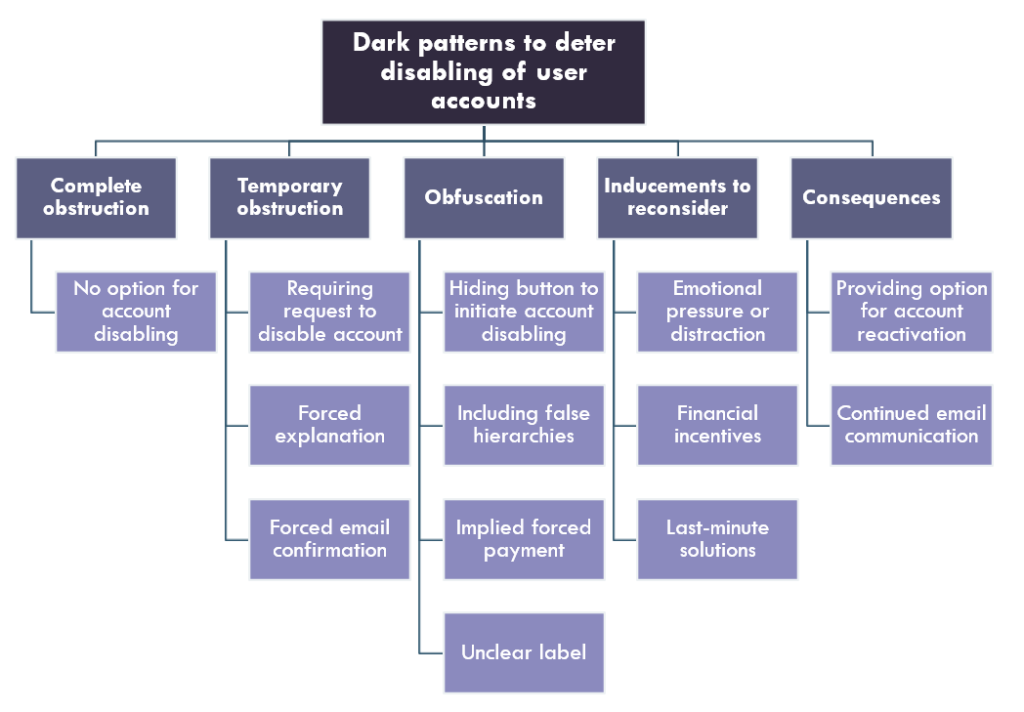
Project Description. “Dark patterns” in UI design are techniques used to influence or manipulate people into performing actions or making choices that benefit online service providers (and not the online users). This project is led by Dominique Kelly based on her thesis research.
Work Provenance.
1. Originally, this work was presented at the Social Media & Society 2022 Conference (see Abstract here).
Please also see the associated slideshow presentation below:
Suggested citation: Kelly, D. & Rubin, V. L. (2022). Dark Pattern Typology: How Do Social Networking Sites Deter Disabling of User Accounts? 12th International Conference on Social Media & Society, July 18 -19, Toronto, Canada https://easychair.org/publications/preprint/GD6S
2. An extended full length article is currently under peer-review for a publication. The full article’s tentative title and abstract are below:
Identifying Dark Patterns in User Account Disabling Interfaces: Content Analysis Results
Abstract: Dark patterns (Brignull, 2010) are user interface (UI) strategies deliberately designed to influence users to perform actions or make choices that benefit online service providers. This mixed methods study examines dark patterns employed by social networking sites (SNSs) with the intent to deter users from disabling accounts. We recorded our attempts to disable experimental accounts in 25 SNSs drawn from Alexa’s 2020 Top Sites list. As a result of our systematic content analysis of the recordings, we identified major types of dark patterns (Complete Obstruction, Temporary Obstruction, Obfuscation, Inducements to Reconsider, and Consequences) and unified them into a conceptual model, based on the differences and similarities within nuanced subtypes in the user account disabling context. The Dark Pattern Typology presented at Social Media and Society 2022 Conference (Toronto, ON) is further illustrated in this work. We document the distribution of the subtypes in our sample SNSs, exemplifying dark UI design choices (see Kelly and Rubin’s Dark Pattern Typology in Figure above). All of the sites used at least one type of dark pattern. Our findings provide empirical evidence for these pervasive – yet rarely discussed – strategies in the social media industry. Users who wish to discontinue using SNSs – to protect their privacy, break an addiction, and/or improve their general well-being – may find it difficult or nearly impossible to do so. Dark patterns, as common UI design strategies, require further research to determine whether particularly manipulative and user-disempowering varieties may warrant more stringent social media industry regulation.